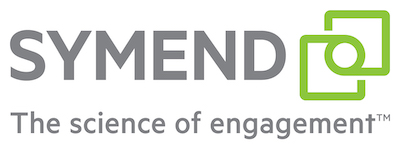Tackling the triple challenge: digital fatigue, decision fatigue, and scarcity mindset
Today’s consumers are navigating unprecedented levels of change and uncertainty. Between the COVID-19 pandemic, economic downturns, and geopolitical instability, consumers are overloaded and are experiencing a trifecta of challenges: decision fatigue, digital fatigue, and scarcity mindset.

Tackling the triple challenge: digital fatigue, decision fatigue, and scarcity mindset
The good news – consumers are looking to businesses for support – in fact, 84% want help from their service providers to more confidently make decisions. With 47% of consumers falling behind or anticipating that they will fall behind soon, providers have an opportunity to support customers while driving toward desired outcomes.
The Symend 2022 Consumer Report, based on a survey of North American bill-payers, sheds light on the depth and intensity of the struggle faced by many in the past year. It provokes the question: in the context of unprecedented levels of change, how can financial service providers support their customers? What support or services can you offer to mitigate avoidance and ensure your customers continue to pay their bills on time? What decision-making burden can be eased to help them take positive action?
This requires a different approach – one that is based on understanding what influences decision-making, otherwise known as behavioural science.
Behavioural science overview
Behavioural science draws from psychology, neuroscience, sociology, and economics to examine how individuals make choices, form habits, and respond to various stimuli in varying contexts. By understanding the underlying factors influencing human behaviour, behavioural scientists can develop strategies to promote positive change, encourage action, and drive positive outcomes in areas such as healthcare, finance, marketing, and public policy.
The application of behavioural science can help organisations design communication strategies that align with human behaviour, ultimately leading to more effective, personal, and sustainable results.
The trio of barriers
Company-customer relationships are at risk. Consumer fatigue is raising the bar for what businesses need to do to support their customers. At the same time, two-thirds of consumers are looking to reduce the number of service providers they engage with to save time and money.
Decision fatigue
Consumers are exhausted by the volume of decisions they are faced with in a given day. According to the American Medical Association, by the time the average person goes to bed, they’ve made 35,000 decisions. In our survey, 71% of respondents reported they sometimes ignore emails or messages from their service providers as they face economic and social pressure.
Scarcity mindset
Consumers actions can be driven by real or perceived resource limitations. Financial concerns and fears of future struggles often lead to suboptimal decisions, such as ignoring service provider messages. This mindset has negative consequences for both customers and service providers, hindering opportunities for cost savings, increased product usage or services, and customer loyalty.
Digital fatigue
Customers are grappling with the demands of an “always on” digital world. According to our recent research, 64% of consumers feel exhausted by too much screen time. The constant “on” screen time in conjunction with the myriad of messages customers are receiving, erodes their ability to evaluate and make decisions effectively.
Supporting your customers
Unfortunately, the compounding impact of these three barriers can lead to procrastination, paralysing fear of making wrong decisions, difficulty with prioritisation, and impulsivity. Of note, however, is how the following barriers increase significantly when consumers are behind on their bills.
To empower customers and facilitate positive decision-making, providers need to align their engagement strategies with individual preferences and motivations. Here are three key principles based on behavioural science that you can begin to weave into your customer engagement process:
Personalise, personalise, personalise
Every communication, interaction, and touchpoint should be tailored to reflect individuals’ needs and desires. Over half (53%) of consumers say they’re likely to ignore a communication that feels generic and isn’t relevant or personalised.
Volume, frequency, and channel
Where, how, and how often you connect with your customers matters. Consider the number and volume of communications you receive every day. If your customer is currently experiencing digital fatigue, excessive messaging can contribute to exacerbating the feeling of overwhelming exhaustion, and result in your customer ignoring your message, or even worse, switching providers altogether.
Tonality and timeliness
Unnecessary urgency that ramps up pressure on customers can erode trust and negate any goodwill earned. With more than three quarters (77%) of consumers saying that service providers have a responsibility to communicate more mindfully, consider how you craft your messages and when you send them to foster trust and build positive customer relationships.
Elevate your engagement
In a world where change is the only constant, and the demand to be “always-on” is growing more and more, businesses must recognise the importance of hyper-personalised engagement strategies. As context changes, so does consumer behaviours – making it crucial for organisations to stay in sync with their customers.
This is why an increasing number of customer-centric companies are turning to behavioural science as a powerful tool to shape and drive their engagement strategies. By leveraging behavioural science effectively, businesses can deliver empathetic, personalised, and helpful communications.
Even in the midst of ongoing turbulence, adopting a mindful approach and prioritising customer requirements can foster trust, encourage positive decision-making, and fortify customer relationships.
 Author the author
Author the author
Aneesha Nilakantan PhD is a behavioural scientist who leverages her expertise to help businesses better understand consumer behaviour.
She earned her PhD in cognitive neuroscience from Northwestern University, and her BA in cognitive science and molecular biology from University of California, Berkeley.
Sponsored by Symend












































